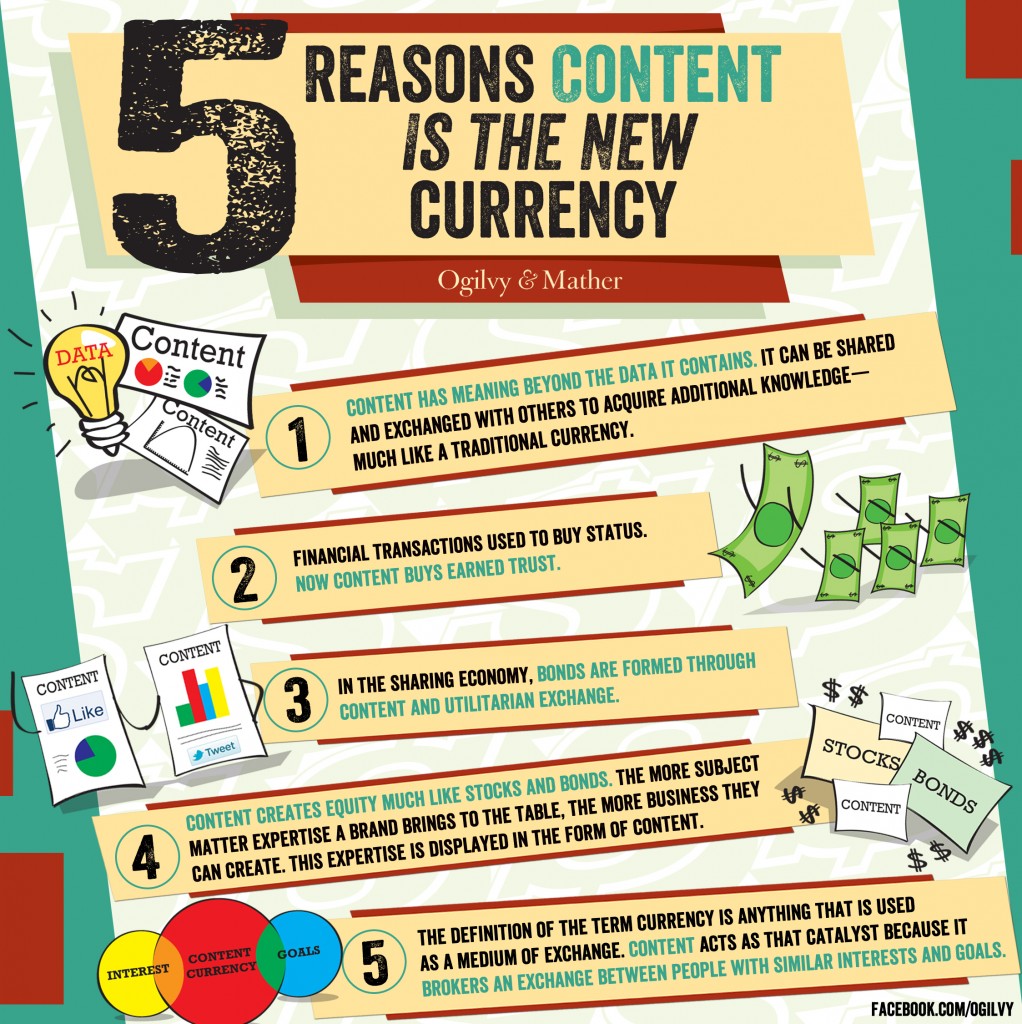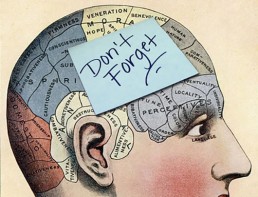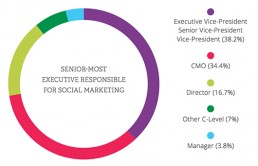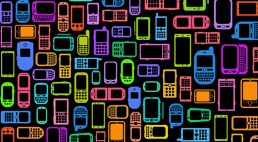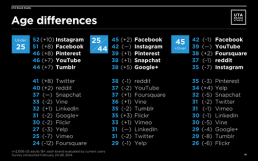How do you build trust?
The marketer's guide to building trust.
I watched a very interesting short video that was sent to me by our digital media strategist, Misha. It makes you think about the future of how we build trust in brands.
The concept of the story is that trust, so important to buying, is not as believable coming from brands as it once was. Sanjay Nazerali, CSO of Carat Global, says that the way trust is earned has changed among consumers.
He suggests that a hundred years ago, trust came from beliefs based on faith and the stories that we found in books. Then consumerism in the likes of Coca-Cola and other age-old brands took the stories successfully into advertising and television and built trust there. Now, he says, we no longer trust the stories put out by brands and look to our social networks for what we need to hear or see to trust in a brand.
An example he uses is one we all can all relate to – you see a great ad for crisp new sheets plus a better experience at a hotel but find on Trip Advisor that 200 people just like me say the experience was not so great. Peer-to-peer experiences and social media are becoming the avenue to trust by consumers.
The video starts with the idea that “ad-blocking” technologies mean something is wrong, that we’re not doing it right.
Check the 5+ minute clip here.
18+ minute version with Robert De Nero here.
A look into a virtual future of advertising
In 2008, I took a bit of a leap from my then 16-year-old advertising agency to form a technology company with investors and developers and some crazy ideas. That has been one of the most transformative experiences in my business life. But that’s not what I want to talk about here.
Our first rollercoaster ride was into virtual reality. In 2008, when nobody was there and Facebook probably hadn’t heard of the Oculus Rift virtual reality headset (which they bought in 2014 for $2 billion), we built a virtual world online dating site because it had been proven that daters would go to that very elusive second date if they experienced each other virtually first.

Then we thought Augmented Reality might be an interesting adjunct to VR, which is a way of meshing the real world with the digital. Think – you’re looking through your iPad screen via its camera and when it sees your friend it turns him or her into Chewbacca from Star Wars. As she walks around, she is Chewbacca as long as you keep looking at her through the iPad screen. (It had to recognize your friend first and then wrap her in Chewbacca skin.)
We were early with both these innovative technologies and we later discovered that they had huge opportunities in marketing (see video above). The times are changing and the market is ready for virtual and augmented reality.
We see virtual reality being used already in tourism where you see the place you’d love to visit in virtual reality – as if you are there. We see augmented reality in allowing you to try on clothes virtually, using both VR and AR to accurately size you. We also see it in amazing form in this example of demonstrating a refrigerator without having to go to the store. LG Fridge example
What do you think about these new experiential technologies and how much more likely you would buy if you could use them in your shopping experience?
How to have a Great Memory
This may seem like a “well duh” moment, but the best way to improve your memory is to pay attention. It’s not really a duh moment as most of us don’t really pay attention when we need to. That’s why we often forget a person's name right after we hear it. Our mind is on other things, like what to say next or what she is wearing.
When we pay attention, we upload other clues that aid in memory, like visual and auditory information from our environment. I experience this all the time when hiking and listening to an audiobook. When I go back to the story later, and it very often starts up again somewhere I wasn’t, (thanks Apple), and I rewind or fast-forward to find my spot, I often recall where I was in my hike as I re-listen to the words that I had heard in that place. I have attached cues that help me to recall information. Mostly useless here, but still it proves it to me.
When you are keeping that experience in your mind, that is when your brain starts storing the extra sensory data.
Does Controversial Advertising Sell Product?
I recall fighting tooth and nail over some of the ideas my creative team would come up with in years gone by. With a sly smile, they would show me something that was way out there, something that could be argued was in the land of controversy…while others might say, in the land of bad taste.
“But it will get attention! And that is what we are all about! It will stop people in their tracks and make them pay attention."
“But it will royally screw up their brand," I would say.
Here’s one that you might remember that went viral in 24 hours and got 15 million views on YouTube in just eight days. The ad agency was tasked with dealing with Kmart’s out-of-stock issues. It’s absolutely brilliant and funny, but…
…but, it created backlash and made it onto the Today Show asking if the ad went too far. Messages to kill the ad flooded in, but Kmart’s agency followed with another brilliantly conceived, but…
…but maybe too much and off-brand, with kids sounding like they’re swearing on TV.
Kmart is a family-friendly retailer. And this campaign was counter to their brand image. It gained incredible attention, but did it sell product? Kmart’s sales fell over 2% in that quarter. The lesson learned here, I think, is that if you want to be controversial, it has to fit the brand and you have to create that edge in the shopping experience. Kmart didn’t and people who loved the ads found nothing new and exciting at Kmart. And those that hated the ads shied away from shopping there.
Here’s one that worked, but everything fits (and I received it in our office Christmas gift exchange…and (testimonial warning) it works!)…
32 million views on YouTube and a 90% increase in sales, expected to climb to $60 million. Reactions to the ad were extremely positive.
Here’s one that failed miserably and shocked everyone associated with the brand and was pulled the same day it ran…
I think you can see why. Of all things, “suicide” doesn’t sell. It can have impact, but look out!
I find that when we can fit the sentiment of the ad with the sentiment built into the brand, and we can be controversial, we can win. Otherwise, controversy can stink in advertising.
(with help from Terry O’Reilly at CBC’s “Under the Influence”)
The Big Guys Believe in Social Media
In the big leagues, social marketing has become huge and a mainstay. 8 out of 10 brands, with revenues larger than $1 billion, have social marketing under the CMO or another C-Level executive.
68% of companies are growing their social budget, while only 55% are growing their total marketing budget.

Almost all (98%) of larger companies in the Spredfast Forrester “The 2104 State of Enterprise Scoial Marketing Report” market on at least one social network and more than half plan to add another.
And they are measuring success, not based on ROI as we usually define it, but on audience engagement — the way we started to measure it in the beginning.
The top two metrics being measured are volume (76%) and engagement (73%), with the least measured metric being conversions.
31% of companies have over 15 employees working on social marketing part-time. 30% of companies with revenue over $25 billion have over 25 full-time social marketers.
It's probably time for you to get involved or to ramp up. It doesn't seem to be going away.

Mobile Advertising Growth Monopolized
Mobile seems to be the place that we’re all headed. And Facebook is the place where much of that growth is being captured.
I keep hearing and reading about the fall of Facebook, and of the youth leaving in scores, but they are seeing the greatest increases in market share in mobile advertising. They are not the leader, but they lead in year on year growth since 2012 after having almost no mobile ad revenue in 2011. Facebook has risen from a 5.4% share in 2012 to 21.7% in 2014. Meanwhile, Google dropped almost six points.
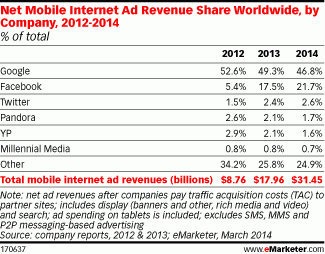
Globally, the mobile advertising industry has more than tripled in two years to cross over $30 billion in 2014 (up from $18 billion last year) — a huge industry, but nothing like TV at almost $200 billion and print at $110 billion (Mashable).
As broadband becomes cheaper and as we untether from our wired home and office computers, mobile will become our screen of choice. You can already watch a lot of TV and listen to most radio stations on mobile, and we’re much more excited when a new mobile device is launched than we are a new computer, TV or music player. With Apple’s impending release of IOS 8, opening up a variety of new health tracking opportunities and home management abilities, we’re not very likely to slow down on our consumption of mobile.
The Death of the Checkout Line?
Who likes to stand in line for the privilege of buying something? How many times have you just walked away when the lineup was too long? Ever walked into a store, seen the lineup, and walked right back out again?
While many stores like to keep the human touch at the retail checkout, technology and smart phones are moving us away from the lineup. Check out the Apple Store near you. Just about every sales person on the floor is also a cashier. You bring your product to them, or ask someone to get it, and they check you out over their iPhone and email you the bill.
And, I'm sure that right at their fingertips, they have your entire purchase history, very useful in offering me something that they already know I would be interested in. I haven't seen them do this at the Apple Store, but I bet they are setting up for near field communications (NFC). See this post for more on NFC.
Long cashier lineups cause stress, anxiety and even bouts of rage —and it can stay with you for hours. The last thing that commissioned sales people want to see is their hard-earned sale balking at the lineup and abandoning the purchase. And who wants to abandon their purchase after spending all of that time being sold? Lineups used to be a fact of life, but now people can find other options.
Mobile payments on the floor will stop those sales slipping out the door. You see a move in that direction at Costco, where they will scan your items while you are in line, and then you merely pay at the till. Kroger, a US grocery chain, has installed infrared cameras that track the number of customers in line by their body heat. Software tells managers how many cash registers are needed now and in a few minutes from now. They have reduced average waiting times to 26 seconds. But I'd bet that their labour cost is up.
Migrating over to mobile payments will only make it easier for retailers to bridge that gap between retail outlet and online shopping. It will help build stronger relationships between sales person and customer and it will help keep shopping gratifying by taking away the mind-numbing exercise of waiting in line.
Attachment to Social Media Brands
Facebook is on top in a new survey by UTA Brand Studio and uSamp in the category of "attachment to a brand". That refers to the degree to which people believe a brand is like themselves and the degree to which thoughts and feelings about a brand come to mind. Research from USC Marshall School of Business suggests that attachment is a better predictor of customer loyalty and customer evangelism.
Instagram came in second, unless you are over 45, where it's fifth and Youtube is second. Instagram is actually number one for the 25 and under crowd. I guess that's why Facebook bought Instagram.
The most surprising find was with Twitter. In the 25 to 44 age group, it ranked tenth, but six of ten people say they use it. Also surprising to me is how low Facebook ranks among men.
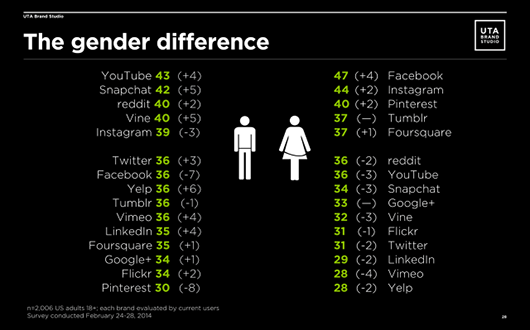
Predictably, Youtube scored well. It's hard not find videos to "attach" to on Youtube, which would cause people to rank it higher.
Brands that show the most potential based on Brand Dependance values were Reddit, Snapchat, Tumblr and Vine.
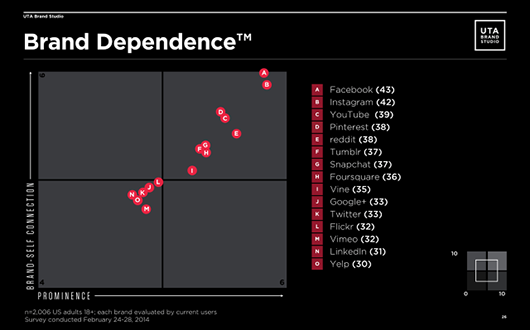
The changing face of the Exchange District
In 1993, Fusion moved from my former business partner’s office building in East Kildonan to Albert Street in the Exchange. We were on the top floor of one of the nicer buildings in the area. It was owned by Tom Dixon, a wonderful and knowledgable landlord who owned eight buildings in the area and was called Winnipeg’s Renaissance Man. He had a deck on the roof and our team used to go up there for a beer late Friday afternoons. People in the Portage and Main towers watched us and envied us I’m sure.
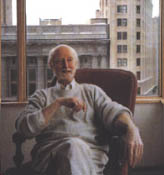
Winnipeg’s Renaissance Man, Tom Dixon

The Hammond Building. That's our office jutting up from the roof at top left.
The daytime culture and summertime tourists in the area made it the place to be, but come darkness that world morphed into something altogether different. Whenever we left for home in the early evening, we fought lineups of traffic to get off Albert Street. This was not rush hour as we know it, but rush hour to drive by all of the prostitutes that hung out on the Albert and Arthur corners with McDermot Avenue. It was truly a red light district, the red lights of car brakes lighten up the night.
We saw a lot from our sixth floor office windows. My partner Terry got into a fight in the lane beside us trying to protect a women he thought was being accosted. She slugged him with her purse to leave her abusive boyfriend alone.
We lost two purses from our office in broad daylight while people were working. We watched in amazement as a couple of street people walked two feet into an alley in front of us and had thirty-second sex against the wall of the Futon outlet. If you came to the office early enough, you’d often see “nomads” with lysol and water in used two-litre plastic bottles. They would stop for a guzzle and a rest and then move on. Old disgarded mattresses got a lot of use in the back alleys of the Exchange.
The District felt a tiny bit safer over the years and then Fusion grew too large for its second space on Albert and had to move out of the District to a building on Vaughan Street, then owned by the Forks North Portage Partnership. That was a very different vibe than the Exchange. It was scary both day and night and people had been murdered on our very block.
It improved a lot over the ten years that we were there, but our building was sold to the Salvation Army and they would only give us a three-year lease with a ninety-day out clause, hoping to use the space themselves someday. That curtailed any office renovation as we could lose any investment with a ninety day warning.
So, in January of 2010, we moved back to the Exchange District, where we had earlier spent our first ten years. We were home again and everything had changed. No more hookers. No more nomads. And restaurants! We ate Albert Street burgers and TD Centre Food Court during our first decade in the Exchange.
Now, restaurants are everywhere. The difference is striking, having spent ten years in the Exchange in the 90’s and now moving back ten years later. People live here! It feels safe as can be in the day and very safe at night. Buildings have been renovated and their sale price has doubled and tripled. Condos are showing up everywhere. There is much life here and it is the best kind.
5 Reasons Content is the New Currency
Money can’t buy trust. But social media content can.
As our friends at Ogilvy & Mather said, “Sharing content helps us connect. Connection helps us engage. Engagement leads to a relationship. Relationships lead to friendship and possibly endearment. In the industrial economy, we congregated in front of the TV, read newspapers and magazines, gathered around the radio and saw signage that told what to believe. In the sharing economy, technology has allowed us to connect, engage, question, critique, criticize or concur. Humans are social animals, and we still need something to spur connection. Content acts as that stimulant. Content is our true currency.”
The 5 Reasons...
